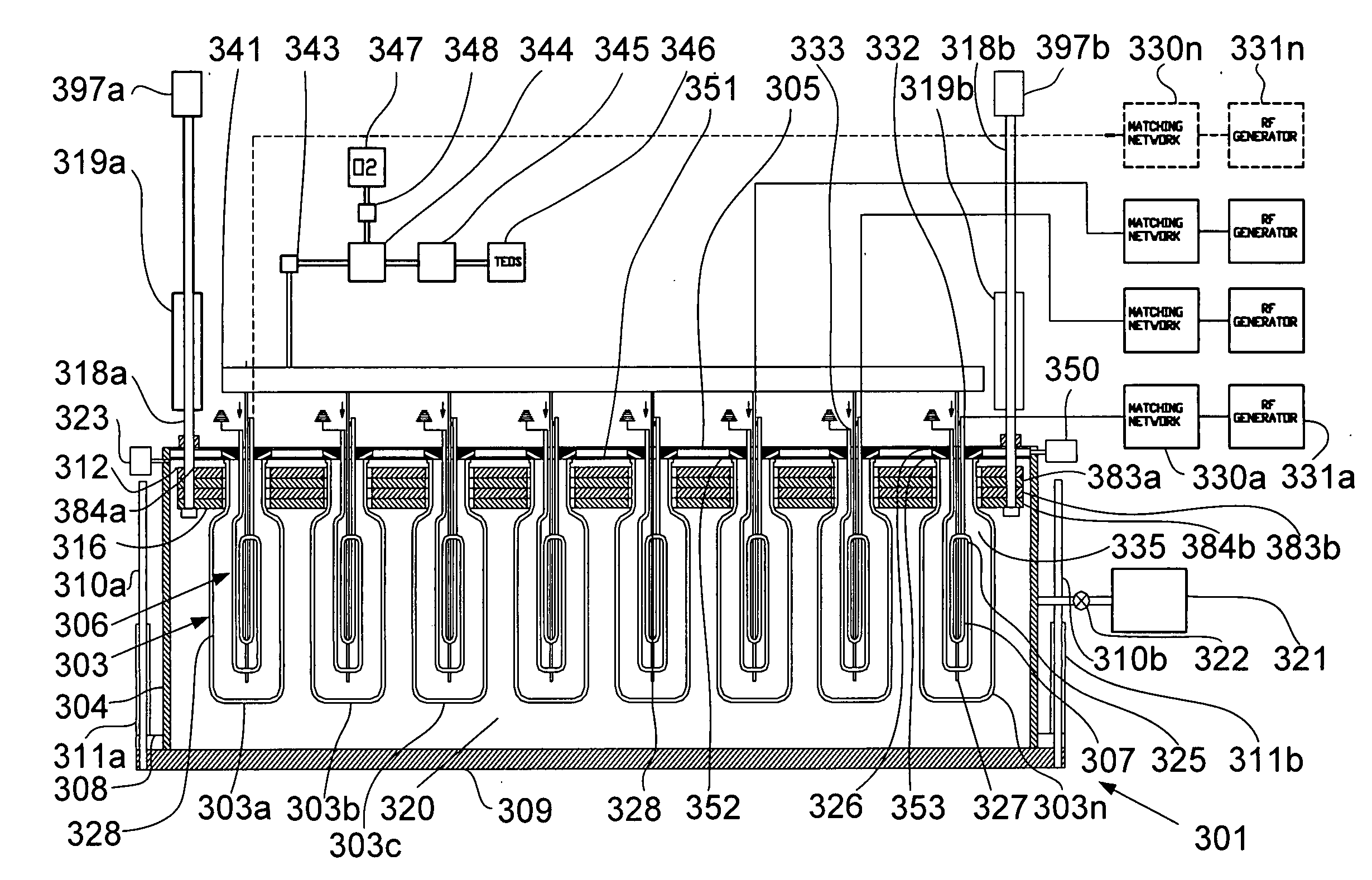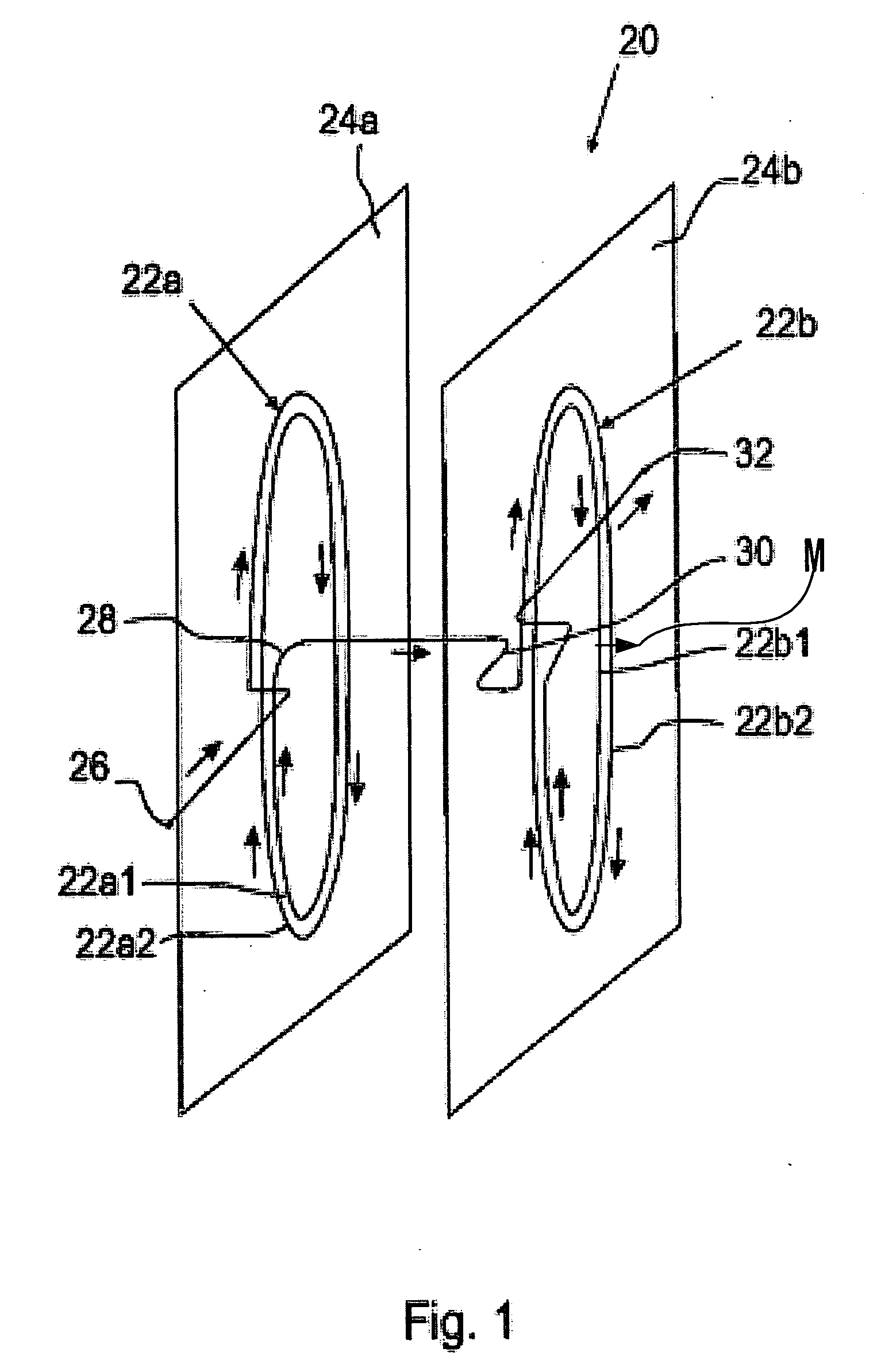Although glass containers are substantially impenetrable and provide products with long
shelf life, they are heavy and expensive for manufacturing and transportation.
However, glass properties such as
chemical resistance and permeability are not attainable for plastics.
Polymer-chain clearance of a plastic structure is less than 1 nm and, hence, cannot prevent penetration of low-
molecular gases having molecules
ranging in size from 0.3 to 0.4 nm.
The
shelf life of liquids is limited, especially for soft drinks and other CO2-containing liquids.
If a PET
package contains a
flavor compound (such as
orange juice or apple juice), this compound causes swelling of the PET container, i.e., opening the structure and further increasing the specific free volume that leads to
oxygen transport.
Flavoring ingredients of low-molecular organic compounds existing in drinks such as lemonade absorb the plastic material and thus deteriorate the quality of the drink.
For these reasons, plastic containers are unsuitable for drinks, especially those with
carbon dioxide,
alcohol, and flavoring ingredients.
However, HDPE has one drawback, and this is
permeation of fuels.
However, a flat substrate such as a
semiconductor wafer, which is an object of deposition, can be treated at high temperatures with application of a bias
voltage, while in the case of plastic containers, the material of such containers has a
low melting point that cannot withstand high temperatures.
Because of the flammability and explosiveness of
silanes, the above process requires special, expensive facilities in the
semiconductor industry.
The pure SiO2 barrier, however, presents some disadvantages because it is brittle and can be torn during bending and squeezing.
The low current of the CCP
discharge is caused by losses of RF power sustaining the
discharge because 70% of this power is wasted by bias-current heating of the inner and outer electrodes, as well as the plastic between the electrodes.
The parasite
discharge consumes a valuable part of RF power.
The
treatment time of sterilization is too long for application of this process in industry.
Although the devices proposed by Mori, Thomas, and Felts generate coating films of different types (in Mori's case, these are
diamond-like films, and in the Thomas and J. Felts cases, these are
silicon dioxide films), the devices suffer from the same disadvantages that are inherent in CCP discharge, in general.
The main
disadvantage of aforementioned processes and devices is that application of the CCP discharge to coat the inner surfaces of a container is carried out at a low-
deposition rate limited by 10 nm / sec, a rate that significantly reduces
throughput of a
production line.
On the other hand, lengthy treatment of
plastic materials at
high flux of
thermal energy generated by electrodes softens the plastic to the extent that after reaching a critical point, a container can collapse.
On one hand, increase in pressure leads to breakdown of the space between electrodes by the arc between both electrodes, which damages the container.
Such a low
duty cycle is not suitable for
mass production of barrier-coated containers and limits
throughput to six bottles per second.
Furthermore, although high-power RF generators are expensive devices, in the case of CCP discharge they are used with low efficiency.
For example, a valuable part of RF power is wasted for heating the outer and inner electrodes and for a parasite discharge in the space between the outer
electrode and the outer wall of the container.
A lengthy coating process can lead to melting of the containers, taking into account that the walls are heated by plasma.
Another problem associated with the use of CCP discharge is bias current driven by alternating
voltage through the plastic.
Such current creates additional heat, which deteriorates and melts the structure of the plastic walls.
Another obstacle is a
high surface charge on the outer and inner surfaces of the walls that occurs between outer and inner discharges.
UV
radiation from plasma initiates photoemission from
dielectric material that generates high electrical charge on the surface, and this, in turn, causes microarcs that destroy integrity of the thin film.
Another obstacle is a high-potential charge that remains on the surface of the container after deposition; this charge attracts dust, and therefore the container may require an additional sterilization.
Evacuation of containers at a
high rate by means of a vacuum
system for a quick drop in pressure is needed to create balance between
high pressure inside the container and low pressure outside the container in order to reduce parasitic discharge, tight enveloping of the container for reducing the space between the outer wall of container and outer
electrode with subsequent decrease of time needed for loading the containers, heating of both electrodes and plastic between them, and collapsing and charging of the container walls, all of which make the CCP discharge process highly inefficient in the formation of barrier coatings.
Provision of the outer electrode makes it impossible to apply the coating onto the inner surfaces of plastic tanks and pipes having a curvilinear shape.
However, use of axially symmetric antennas is not applicable to elongated containers, e.g., bottles, since they cannot generate plasma having high and uniform density near the inner walls of containers.
Such a
system also has disadvantages, including a potentially lower deposition and
treatment rate for
mass-produced applications.
Similar to other
capacitively coupled plasma systems, the
system of the aforementioned invention uses
high plasma sheath energies that may result in excess heating of sensitive plastic container walls resulting in container damage.
This design is also complicated and may require expensive and regular maintenance caused by film deposition on power-
coupling components.
A drawback of this system is low
throughput because of non-optimal direction of the
magnetic field generated by the coil.
Thus, coating of the walls in such a system has a low throughput rate.
The
disadvantage of all apparatuses and methods for application of coatings onto the inner surfaces of containers known to the inventor is that some of the known methods and apparatuses are not suitable for application of
silicone dioxide
layers onto the inner surfaces of containers.
Other conventional methods and apparatuses are difficult to control and do not allow deposition of thin coatings onto low-melting-point plastics at relatively low temperatures, and, most importantly, all methods and apparatuses known to the inventor have low efficiency and do not provide sufficiently high throughput in
mass production.
 Login to View More
Login to View More 


